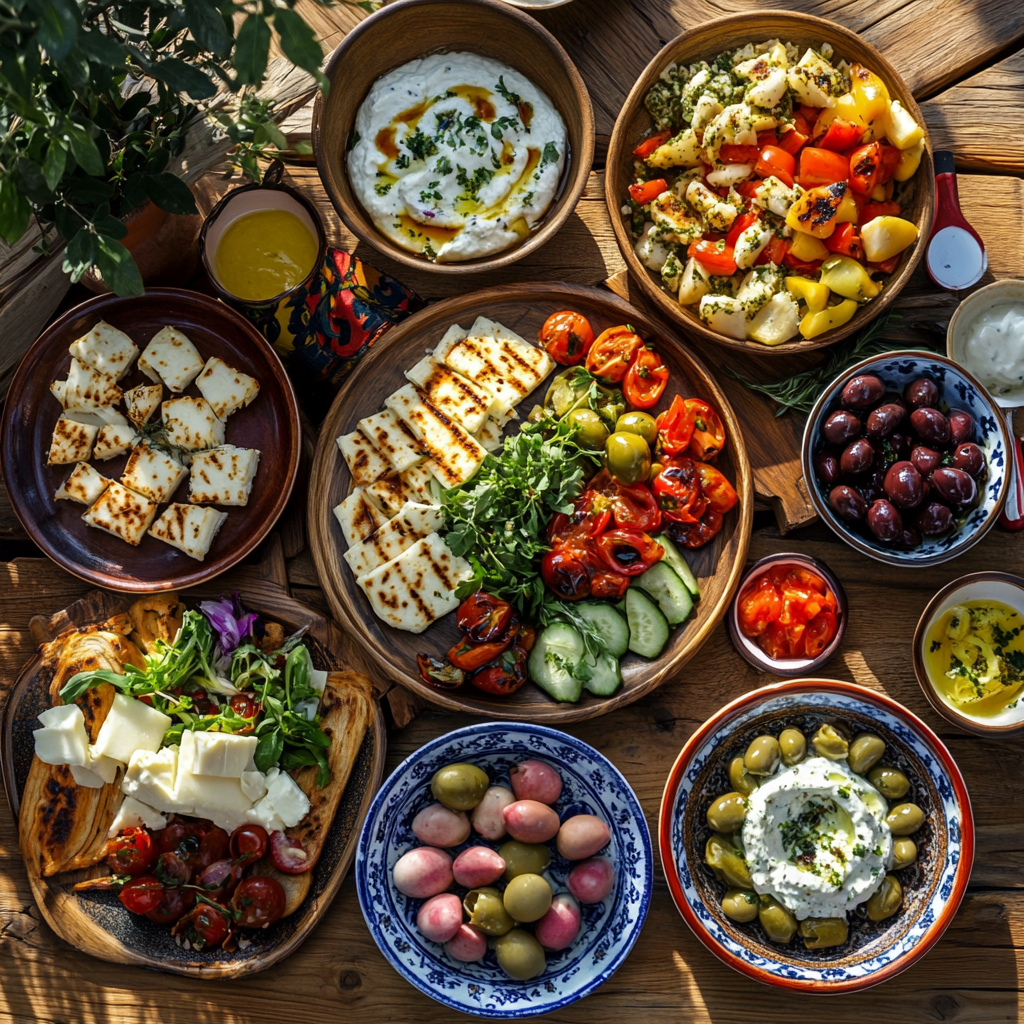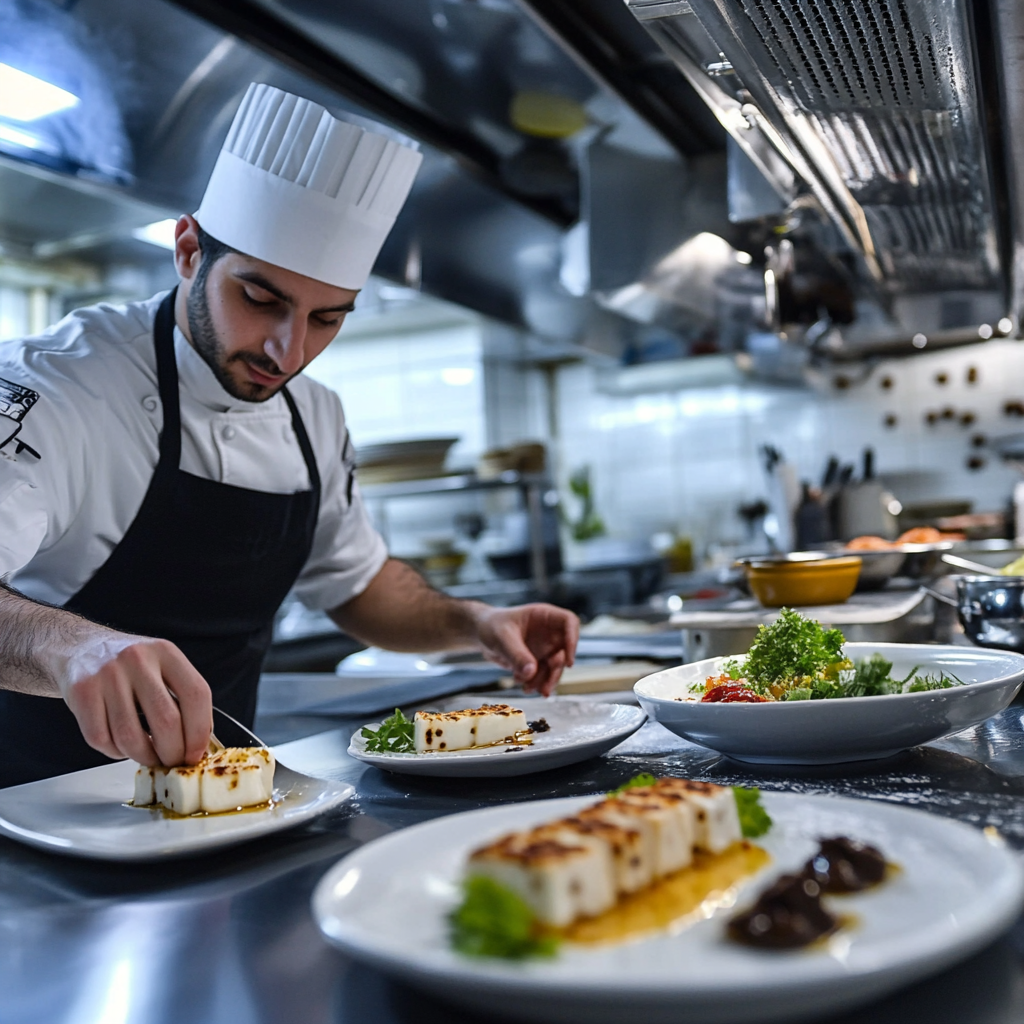The Rich Tapestry of Cypriot Cuisine
Exploring Cypriot Culinary Heritage
Cypriot cuisine is a culinary journey that mirrors the rich cultural heritage and diverse influences of the island. Located at the crossroads of the Mediterranean, Cyprus has been shaped by Greek, Turkish, Italian, and Middle Eastern culinary traditions.
This fusion has resulted in a vibrant food culture characterized by fresh, local ingredients and unique cooking techniques. This article explores the key elements of Cypriot cuisine, highlighting its distinctive dishes, ingredients, and cultural significance.

Meze: A Kaleidoscope of Flavors and Textures
Meze is a quintessential component of Cypriot dining, embodying the spirit of sharing and communal eating. It consists of a variety of small dishes, each showcasing different flavors and textures.
Typical Meze offerings include grilled halloumi cheese, spicy sausages (sheftalia), fresh seafood, and an array of crisp vegetables. This tradition reflects the island’s diverse culinary influences and the importance of social dining.
Souvlaki and Stifado: Iconic Main Dishes
Souvlaki, consisting of marinated and grilled meat skewers, is a staple in Cypriot cuisine. Typically made from pork or chicken, it is seasoned with lemon juice and oregano, then served with pita bread, fresh salad, and tzatziki.
Another beloved dish is Stifado, a hearty beef stew slow-cooked with onions, red wine, and tomatoes. These dishes highlight the Cypriot preference for robust flavors and simple, yet flavorful, preparations.
Loukoumades and Baklava
Cyprus also boasts an array of delectable sweets. Loukoumades, small dough balls soaked in honey and sprinkled with cinnamon, are a popular treat. Similarly, Baklava, made from layers of phyllo dough, nuts, and syrup, is widely enjoyed across the island.
These desserts are not just a testament to the Cypriot sweet tooth but also a reflection of the island’s historical ties to Greek and Middle Eastern culinary traditions


The Role of Local Ingredients
Central to Cypriot cuisine is the use of fresh, local ingredients. The island’s fertile soil and favorable climate produce a bounty of fruits, vegetables, and herbs that are integral to its dishes.
Olive oil, a staple in Mediterranean cooking, is used extensively, along with local cheeses like halloumi. The emphasis on fresh, high-quality ingredients ensures that even the simplest dishes are bursting with flavor.
Culinary Traditions and Regional Specialties
Each region in Cyprus has its own specialties, adding unique touches to the island’s culinary landscape. For instance, the village of Lefkara is famous for its intricate lacework and traditional dishes like Ttavas, a lamb stew cooked with vegetables and flavored with cumin.
Coastal areas, on the other hand, are known for their seafood dishes, such as octopus stewed in red wine.
The Importance of Gastronomy in Cypriot Culture
Dining in Cyprus is more than just eating; it is a cultural experience. Traditional tavernas serve as hubs for social interaction, where locals and visitors alike can enjoy authentic Cypriot hospitality. These establishments offer more than just food; they provide insights into the island’s way of life, its customs, and its vibrant community spirit.

Conclusion
Cypriot cuisine is a reflection of the island’s rich cultural tapestry, blending various influences into a unique culinary tradition. From the communal joy of sharing Meze to the hearty satisfaction of dishes like Souvlaki and Stifado, the flavors of Cyprus offer a glimpse into its history and culture.
For those interested in exploring this vibrant culinary landscape further, seeking the expertise of professional advisors or culinary tours can enhance your understanding and appreciation of this dynamic cuisine. Engaging with local experts can help you navigate the diverse offerings and fully immerse yourself in the rich traditions of Cypriot food.







